Fried garlic or gratiem jiew is a quick an easy way to add garlicky goodness to any dish you make. You can sprinkle the crunchy golden garlic bits onto a dish, or drizzle the garlic oil on to anything. It's also an essential condiment for many Thai dishes, especially noodle soups. It's easy to make and will keep indefinitely in the fridge!
The good news is one you make the fried garlic, you'll end up with garlic oil as a tasty by product. So it's one process to make both things!
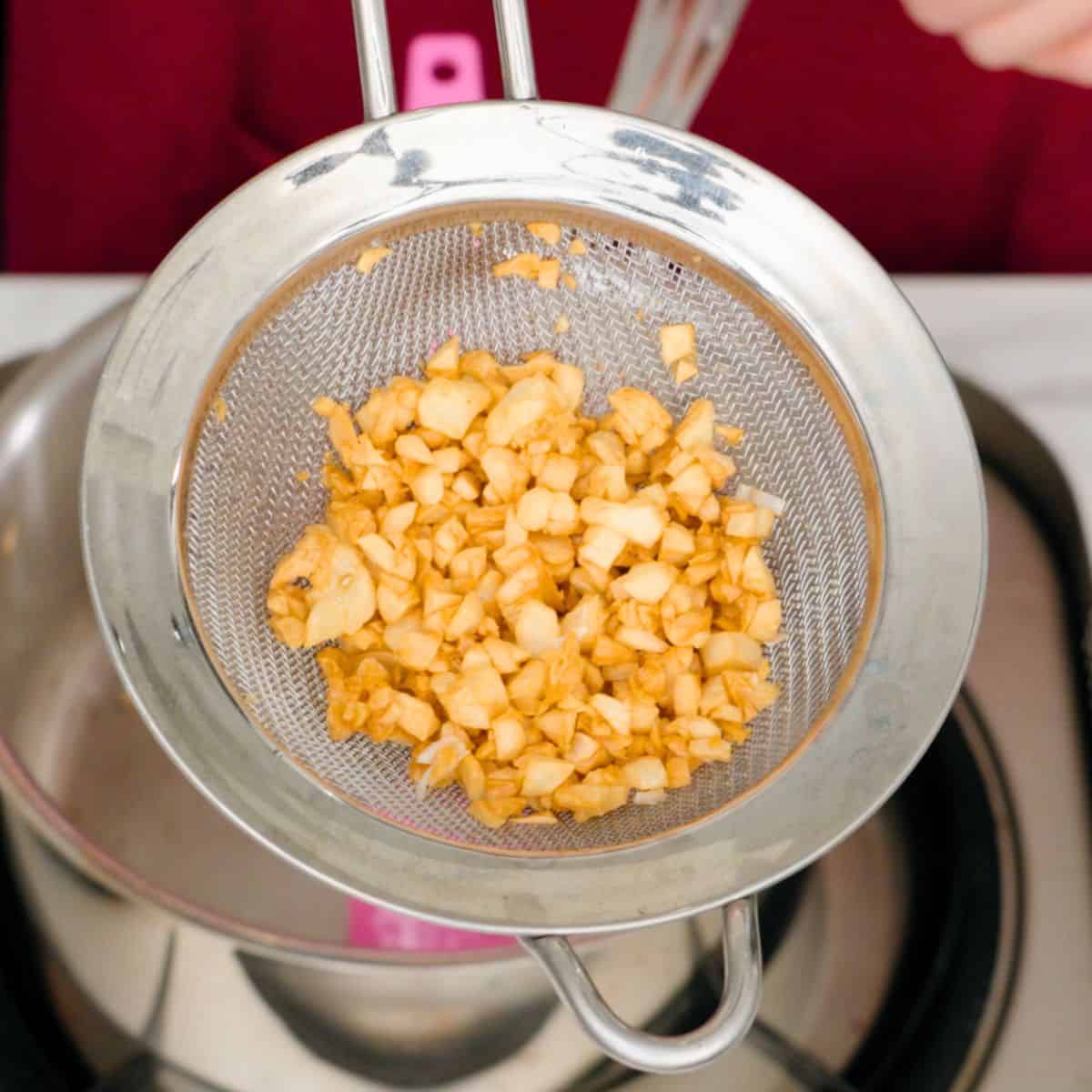
How to Use Fried Garlic
Sprinkle the crispy fried garlic on top of anything you want! Your breakfast eggs, tacos, really anything. In Thailand, the crispy fried garlic is most commonly used on noodle soups such as boat noodles and chicken noodle soup. We also use it to top stir fried dishes such as Northern laab, garlic pepper chicken or garlic pepper pork.
The garlic oil can be used as a cooking oil or as a finishing oil and in Thailand we use it in both ways. I usually drizzle it on top of soups along with the fried garlic, but you can also use it to cook veggies, eggs, or use it to finish a salad.
How to Make Fried Garlic & Garlic Oil
Here's a bird's eye view of the process so you know what's involved. For ingredients amounts and full instructions, see the recipe card below!
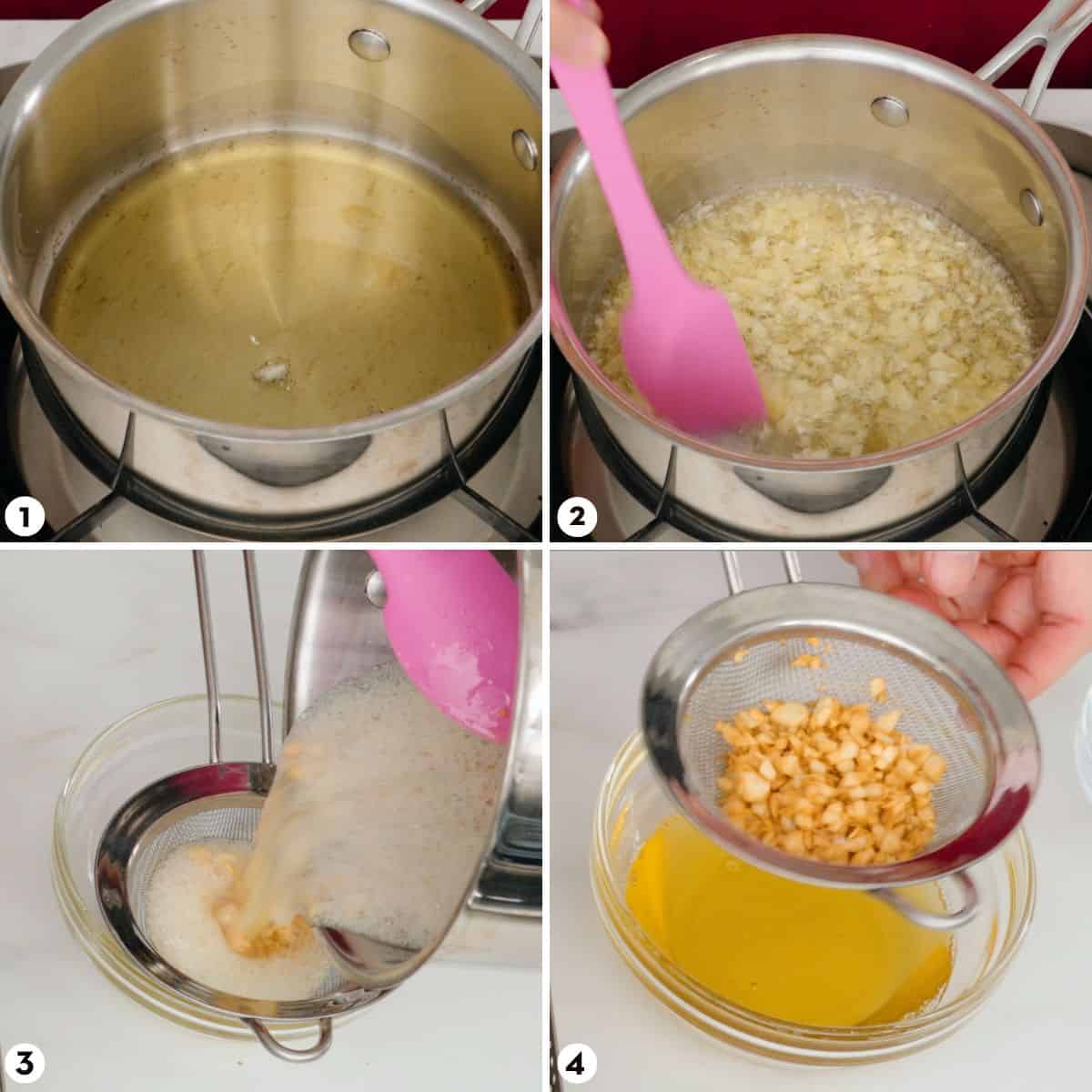
- Heat the oil over medium heat and add 1 piece of garlic as a "test" and wait for it to bubble.
- Once the test piece bubble, turn the heat down to medium low and add the rest of the garlic. Stir constantly until golden, about 5-8 minutes.
- Drain through a metal sieve immediately (don't use plastic or you will melt it!)
- It's now ready to use! The garlic will not be crispy when hot, so let it cool first.
Storage
I keep the fried garlic and the garlic oil separately otherwise the fried garlic will lose its crispiness. Keep them both in sealed containers in the fridge and they will last many months.
Depending on the type of oil you use, the oil may solidify in the fridge. If this happens, simply take it out 10 minutes or so before using so it can liquify. In a rush, nuke it for a few seconds in the microwave (like literally 5 seconds, it goes fast!)
Save this recipe!
Common Problems When Frying Garlic
It's a simple thing to make, but you need to understand how it works or issues can occur! Here are some common issues:
The garlic is bitter.
Probably the most common problem, and it's because you over fried it! You want the garlic to be GOLDEN, not golden brown. If it's too brown, it might look nice but it'll start to be bitter. The garlic will also continue to darken slightly after you drain it from the oil, so aim to take it out a bit earlier.
The garlic burnt so quickly!
The heat is too high! Garlic goes from done to burnt fast, which is why you need to keep the heat medium-low or low throughout the frying process. People often get impatient and turn the heat up, and then it catches them off guard and burns instantly.
Also, do not walk away! The first few minutes will look like nothing is happening, so often people walk away to do something else. But the rule of the universe states that when you're not watching fried garlic, that is precisely when it will burn!
The garlic is golden but not crispy.
This is also from heat being too high. You took it out at the right beautiful colour, but the garlic got to that colour too quickly and not enough moisture had evaporated.
Crispiness comes from lack of moisture, if something is moist, it will not be crispy. The frying removes moisture, so you need to give it enough time for most of the moisture to evaporate. This is another reason to keep the heat low.
A sign that the garlic is crispy is that the bubbling has slowed down significantly because bubbling occurs from the water evaporating out of the oil. When the bubbling is weak or has stopped completely, the garlic has lost enough moisture to be crispy.
Cutting garlic too big will also cause this problem because there is simply too much moisture so the garlic cannot possibly lose it all before it turns golden. Keeping the pieces small enough is important!
The garlic is oily
This happens when the garlic is added to the oil when the oil was too cold, or if the heat becomes too low during the frying. When the oil is not hot enough to cause bubbling, there is not enough outward push from the water evaporation, so oil can seep into the garlic.
This is why I suggest you add a test piece of garlic to the oil and wait for the test piece to bubble before adding the rest of the garlic.
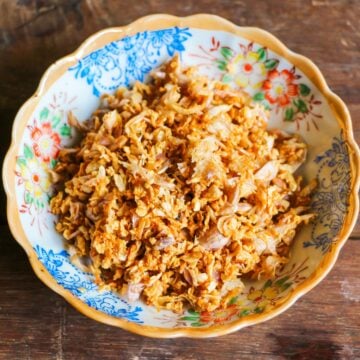
Fried Garlic and Garlic Oil
Save this recipe!
Ingredients
- 1 head garlic
- ⅓ cup neutral oil
All my recipes come with step-by-step video tutorials with extra tips not mentioned in the blog post, so make sure you watch the video to ensure success. If you enjoy them, consider subscribing to the YouTube Channel to not miss an episode. Thank you!
Subscribe to my YouTube ChannelInstructions
- Chop the garlic just until the pieces are no bigger than ⅛ inch (3 mm) but do not mince finely.1 head garlic
- In a small pot, add the oil and turn the heat to medium. Add 1 test piece of garlic, and once the garlic starts bubbling, add the rest of the garlic and turn the heat down to medium low. (The oil should just cover the garlic, and you can add more oil if needed.)⅓ cup neutral oil
- Stir the garlic constantly until golden and the bubbling has mostly subsided, about 5-8 minutes. The more you make the longer it will take. Do not let the garlic brown or it'll become bitter; you're going for golden, not golden brown. It'll continue to darken slightly after you take it out from the oil so take it out a bit early to be safe.
- Drain the garlic through the metal sieve, catching the oil in a bowl underneath, and it's ready to go! Store the fried garlic and the oil separately in a sealed container in the fridge. If the oil solidifies in the fridge, bring it out shortly before using so it can liquefy.



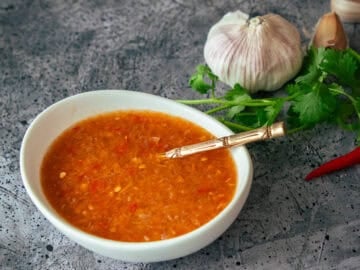
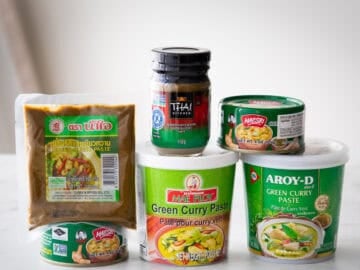
Trish says
When making this, do you let the garlic oil cool at room temp before storing in fridge? Or take the straight hot oil and put that in the fridge?
mark says
Fantastic. How long can the fried garlic be stored in the fridge for?
TIA
Pailin Chongchitnant says
I have kept fried garlic for a few months in the fridge with no issues.
Mike D. says
Just tried this for the first time and it turned out perfect! Crispy little bits of garlic...
Explaining for us how we're trying to drive off water ... slowly... without burning made it easy to understand what was happening in the pan.
Thanks! Love your work.